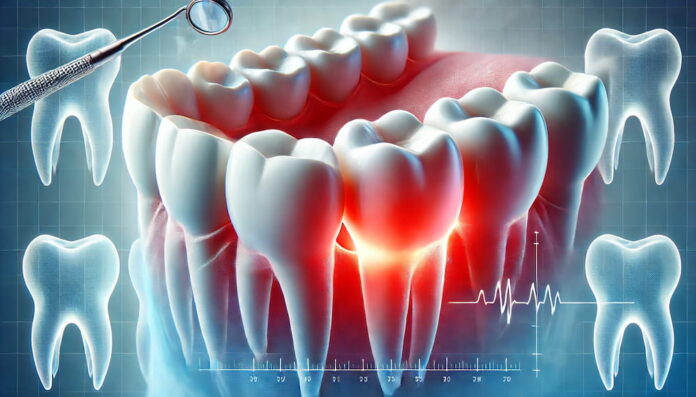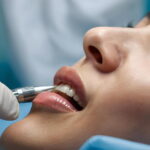Dental crowns are common restorative treatments used to restore teeth that are damaged or decayed. While crowns are designed to be durable and long-lasting, some patients experience discomfort or pain after getting one. If you’re wondering, “Why does my crown hurt?” you’re not alone. Pain after a crown procedure can stem from a variety of reasons. Understanding the potential causes and how to address them can help ease your discomfort and protect your oral health.
In this article, we’ll explore common reasons why crowns may cause pain and what you can do to relieve it. If you’re experiencing persistent pain, it’s always a good idea to visit a family dentist in Arlington, VA, such as Bloom Dental of Arlington, for expert care and advice.
Common Reasons Why a Crown Might Hurt
Tooth Sensitivity After the Procedure
It’s normal to experience some sensitivity after getting a crown, especially if the tooth had extensive decay or damage before the procedure. The tooth underneath the crown may still be healing, and this can cause temporary discomfort or sensitivity to hot, cold, or sweet foods.
Solution: Sensitivity usually resolves after a few days to a week. If the discomfort persists, it’s important to visit your dentist to check if the issue is more serious.
Crown Does Not Fit Properly
A crown that doesn’t fit properly can cause pain by exerting pressure on surrounding teeth or the underlying gum tissue. If the crown is too high, it can lead to discomfort when chewing or biting down, as the force is not evenly distributed.
Solution: If you suspect your crown doesn’t fit right, contact your dentist. They can adjust the crown to ensure proper fit and eliminate the pressure that is causing the pain.
Gum Irritation or Infection
After a crown is placed, the gums around the tooth can become irritated. If the crown edge is too rough or too high, it can rub against the gums, causing discomfort. In some cases, infection may develop under the crown, leading to pain and swelling.
Solution: Rinsing with salt water can help soothe mild irritation. If infection is suspected, you should seek dental care right away. Your dentist may need to remove the crown to address the infection and ensure proper healing.
Underlying Tooth Decay or Damage
If the tooth underneath the crown wasn’t adequately treated for decay or damage before the crown was placed, the infection or damage could continue to spread. This can lead to pain and discomfort even after the crown is put in place.
Solution: A thorough examination by your dentist will help determine if there is underlying tooth decay. In some cases, a root canal treatment may be necessary to resolve the issue before a new crown is placed.
Cracked or Damaged Crown
Over time, a crown can crack or become damaged due to wear and tear, trauma, or biting down on hard objects. A cracked crown can expose the underlying tooth, causing pain when chewing or biting.
Solution: If your crown is cracked or chipped, contact your dentist for a replacement or repair. It’s important to avoid chewing on hard foods to prevent further damage.
Nerve Damage or Inflammation
During the placement of a crown, the nerve inside the tooth can sometimes become inflamed, particularly if the procedure involved a significant amount of drilling or if the tooth was heavily decayed. This inflammation can cause prolonged pain and sensitivity.
Solution: If you suspect nerve involvement, your dentist may recommend a root canal treatment to remove the inflamed nerve tissue and prevent further pain.
When to Visit Your Dentist
If your crown is causing persistent pain, it’s important to schedule an appointment with your dentist. A family dentist in Arlington, VA, such as Bloom Dental of Arlington, can evaluate the issue and determine the exact cause of your discomfort. They will conduct a thorough examination, which may include X-rays, to diagnose the problem and recommend the appropriate treatment.
It’s especially important to seek dental care if you experience any of the following symptoms:
– Severe pain that lasts more than a few days
– Swelling or redness around the crown
– Difficulty chewing or biting down
– Fever or signs of infection
Preventing Pain from Crowns
While pain after a crown procedure is not uncommon, there are steps you can take to reduce the likelihood of experiencing discomfort:
– Follow Post-Op Care Instructions: After getting a crown, your dentist will provide care instructions. Following these carefully can help avoid complications like irritation or sensitivity.
– Avoid Hard Foods: Immediately after the crown is placed, avoid chewing on hard foods that could put pressure on the crown or cause it to crack.
– Maintain Good Oral Hygiene: Keeping your mouth clean by brushing and flossing regularly can prevent gum irritation and tooth decay, which can lead to crown discomfort.
– Visit Your Dentist Regularly: Regular checkups will help ensure that your crown is still in good condition and that there are no underlying issues.
Conclusion
Experiencing discomfort after getting a crown is not uncommon, but it’s essential to identify the cause of the pain and seek appropriate treatment. Whether it’s due to tooth sensitivity, improper fit, or an underlying issue, a family dentist in Arlington, VA, such as Bloom Dental of Arlington, can help you address the problem and relieve the discomfort. If you’re dealing with persistent pain, don’t hesitate to schedule an appointment to ensure that your crown is working as it should.
By maintaining regular dental checkups and following your dentist’s care instructions, you can enjoy the long-lasting benefits of your crown without the pain.
Did you find this helpful? Check out our other helpful articles on our website.
Read Also
- Ketamine-Assisted Therapies: Impacts on Employee WellbeingWorkplace stress is common today. Many employees feel tired, anxious, or burned out. Regular therapy can help, but some people need more support. Ketamine-assisted therapy is showing good results for mental health. A ketamine-assisted therapist guides each session safely. This therapy can improve mood, focus, and energy. Learning more about it can help teams stay… Read more: Ketamine-Assisted Therapies: Impacts on Employee Wellbeing
- The Future of Men’s Health: Why Telehealth Is Here to StayTelehealth isn’t just a pandemic trend that faded into the background. For Australian men, it has become one of the most practical, time-saving, and stress-free ways to manage everyday health — and it’s shaping the future of how we access care. Platforms like DOCTO, an Australian online doctor and specialist telehealth service, are leading the… Read more: The Future of Men’s Health: Why Telehealth Is Here to Stay
- How to Build a Simple, Clean Skincare Routine ?You don’t need a complicated skincare routine. It doesn’t have to be something that requires twenty different products and confusing steps. Your routine works well with just a few high-quality clean ingredients. The beauty industry keeps pushing more products, but your skin actually needs less. You only need a simple approach to get better results… Read more: How to Build a Simple, Clean Skincare Routine ?
- How Preventive Dental Care Supports Overall HealthHave you ever wondered how a simple dental checkup could impact your entire body? Oral health is more than just a bright smile. Studies show that poor dental habits can contribute to serious health problems. Gum disease and tooth decay are linked to heart disease, diabetes, and infections. Yet, many people overlook preventive dental care.… Read more: How Preventive Dental Care Supports Overall Health
- Seeing Clearly in a High-Tech World: A Deep Dive into Advanced Vision Care ServicesProtecting your eyesight isn’t optional—it’s essential. Modern eye care has evolved far beyond basic exams, offering advanced diagnostics, personalized treatments, and surgical innovations that keep vision sharp for life. A leading example is Intermountain Eye Center, home to specialists like Dr Fishburn Boise, where patients receive comprehensive, high-level vision care designed to preserve long-term eye… Read more: Seeing Clearly in a High-Tech World: A Deep Dive into Advanced Vision Care Services
- Why the Keto Diet Works for Some People—and Fails Dramatically for Others: An Ayurvedic Breakdown for Modern HealthcareThe keto diet has dominated weight-loss culture for years. For some people, it produces rapid fat loss, stable energy, and improved mental clarity. For others—especially those who gain weight easily—it leads to burnout, digestive distress, rebound weight gain, high cholesterol, and a metabolism that feels slower than before. Healthcare often frames this as a discipline… Read more: Why the Keto Diet Works for Some People—and Fails Dramatically for Others: An Ayurvedic Breakdown for Modern Healthcare
- How to Choose the Best Assisted Living Facility for SeniorsAre you looking for the right assisted living facility for a senior loved one? Choosing a place can feel overwhelming. There are many factors to consider, from care services to the environment. Safety, comfort, and social opportunities play important roles in daily life. Each senior has unique needs and preferences that must be met. Understanding… Read more: How to Choose the Best Assisted Living Facility for Seniors
- Burn Smart, Not Hard; Shape Burn: Clean Protein for Weight ManagementYou want to feel light, strong, and confident. You don’t want crash diets or fake promises. You need a plan that works with your body, not against it. That’s where Shape Burn comes in. You can burn fat without losing strength. You can eat better and stay full. You can manage weight in a way… Read more: Burn Smart, Not Hard; Shape Burn: Clean Protein for Weight Management









